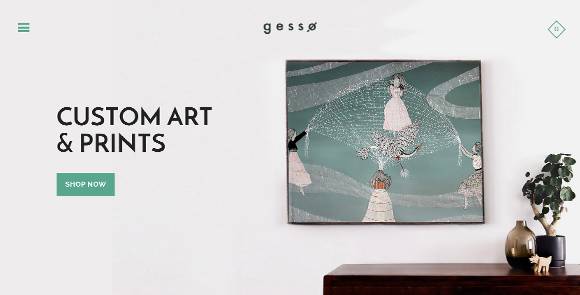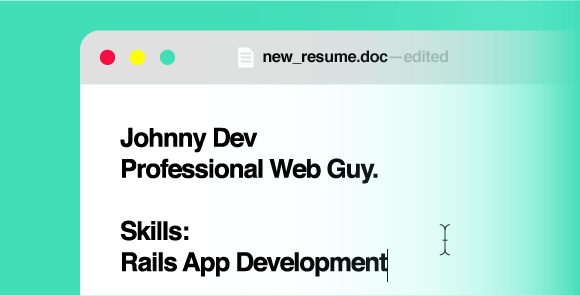
Guided selling is an approach where businesses actively direct customers to purchase a product based on their specific needs and provide educational information to support their buying decision.
On e-commerce sites, guided selling can be in the form of an interactive feature, like the “you may also like” product recommendation box, or an educational content piece that helps contextualize the product to the user, like a “how to use” or “how to wear” product video. Unlike product filters, general navigation, or free text search, guided selling techniques add a layer of personalization to the shopping experience and aim to reassure consumers that they are making the right purchase.
Most, if not all, e-commerce sites implement some form of guided selling for obvious reasons: consumers shopping online cannot touch, taste, or try products before committing to a purchase. But that doesn’t mean that guided selling techniques should be implemented and then forgotten. Constantly enhancing and improving on the guided selling approach can help add a personalized element to the ecommerce experience.
According to this study, adding any form of personalization increases ecommerce sales by 7.8% and 56% of consumers are more inclined to purchase if offered a personalized experience.
Here are scenarios where an improved guided selling approach can be especially valuable:
- When a shopper doesn’t know the technical specifications that best fits her needs or desires (ex: I want a new road bike but I’m not sure if I should get a Touring Bike or a Flat-Bar Road bike)
- When a shopper only has a general idea of what they want to purchase (ex: I want to find a gift for my mom)
- When a shopper is trying a product for the first time
- When a product or concept is fairly new to the market
Below we’ve highlighted 8 ways to increase e-commerce personalization through guided selling and 16 examples of how these techniques have been implemented across different industries.
#1 Themed Product Landing Pages
Curating product landing pages into themes like moods, personality-types, celebrities, or activities can give shoppers a new way to discover and experience products beyond the standard product variants (ex: size, color, quantity).
Burton Snowboards, for example, features a “13 things” list curated by influential athletes or by seasonal events. Similarly, Huckberry has an entire “Buying Guides” section in the main navigation where shoppers can explore products by categories such as “Wedding Style Guide” or activities such as “Spring Commuter Shop.”


#2 Interactive Shopping Guides and Seasonal Look-books
Interactive shopping guides and seasonal look-books use editorial content to bring products to life in a way that is different from the normal product listing experience.
Reebok does this effectively with its Mother’s Day shopping guide, which pairs lifestyle photography with clickable hotspots so that shoppers can better visualize Mother’s Day gifts and still access product information without leaving the page. AYR, the women’s clothing brand, has a dedicated Editions look-book that highlights seasonal clothing separate from the main e-commerce experience.


#3 Editorial Stories and Testimonials
Inspiring influencer stories and compelling testimonials add a human element to the purchasing experience.
The pro-cycling company, Rapha, features athlete testimonials in a magazine-like layout while still promoting its product after each quote. The fashion brand Mr. Porter uses its blog, The Journal, to spotlight long-form stories. Shoppers are able to access product information by hovering on the photo captions.


#4 Customer Questionnaires
Customer questionnaires prompt shoppers with a series of questions and serve up a list of suggested products based on the shopper’s answers. This guided selling example is a bit more development-intensive but can be a helpful way to learn more information about specific customer segments while also delivering a more tailored shopping experience.
Victoria’s Secret features a Sports Bra Guide that helps shoppers find the right bra based off the intensity of the workout and fit. Harry’s also uses a questionnaire to recommend the right shaving plan to shoppers based on how often they shave. My Beauty Picks on the L’Oreal USA site uses the RichRelevance platform to personalize the entire shopping experience based on the customer’s style, hair and eye color, and skin type.



#5 User Generated Photo Galleries
Adding user generated content from Instagram, Tumblr, or Facebook to an e-commerce site makes it easier for shoppers to relate to a product and to better imagine how a product might fit or work. Done effectively, user generated photo galleries can also help encourage brand loyalty by celebrating brand fans.
Onzie, the Bikram yoga gear site, uses a tool called foursixty to pull Instagram photos onto the website and to add specific product links to the Instagram photo. West Elm, the modern furniture and home decor shop, also uses user submitted Instagram and Facebook content on each product page to showcase how different people use West Elm products in their home.



#6 Visual and Virtual Fitting
Visual and virtual fitting rooms transform static size charts into interactive guides that help consumers find the right product.
Bonobos, the men’s clothing brand, has a dedicated Fit Guide for its pant, shirt, and tailored suit line. Each guide uses animations, illustrations, and photography to direct the shopper to the best fitting clothes. Bonlook, the fashion eyewear company, utilizes a Virtual Try On tool so that shoppers can see what a pair of glasses might look like. The tool maps the selected pair of glasses onto an uploaded photo of the shopper’s face.


#7 Multimedia Product Content
Multimedia content like product videos, GIFs, and interactive photos give shoppers another way to experience a product or to see the product in motion.
DailyBurn’s supplement and fitness gear shop uses interviews with athletes and nutritionalists to explain the benefits of taking supplements and features the videos directly under the product photo. Warby Parker‘s product image includes a 180 degree view of the glasses being worn by a model, allowing shoppers to see the glasses from multiple angles.


#8 Comparison Charts
Comparison charts make it easier for shoppers to quickly scan multiple products or features in one place.
Fitbit’s Find Your Fit page centralizes its Everyday, Active, and Performance Fitness wearable lines onto one interactive chart so that shoppers can easily compare the range of features in each product and make a more informed purchase.

Takeaway
Continuously improving on guided selling techniques, whether it’s through an interactive feature or educational content, can help e-commerce sites deliver on personalization and improve overall shopping experience. To wrap up here are the 8 ideas we’ve explored:
- Themed Product Landing Pages
- Interactive Shopping Guides and Seasonal Look-books
- Editorial Stories and Testimonials
- Customer Questionnaires
- User Generated Photo Galleries
- Visual and Virtual Fitting
- Multimedia Product Content
- Comparison Charts




